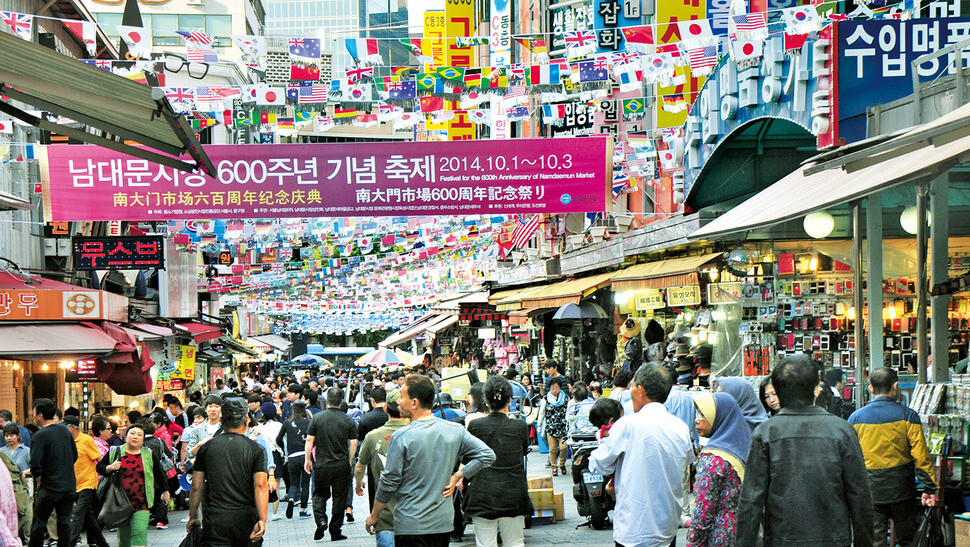
The Galchi (Hairtail Fish Stew) Alley in Seoul's Namdaemun Market is getting younger. Recently, young entrepreneurs in their 20s and 30s have been steadily opening up shops in this area, known as the epitome of traditional markets, rapidly changing the alley's scenery.
Upon arriving at the entrance of Galchi Alley, familiar sights and new elements simultaneously caught the eye. Next to restaurants with the usual braised hairtail signs, dessert cafes with pink neon signs and handmade goods stores were located. A long line formed in front of a sign for 'Galchi Taco,' something usually seen on social media. The scene, with a mix of tourists, the MZ generation, and foreigners, was distinctly different from before the COVID-19 pandemic.
The Bright and Dark Sides of the Alley Transformed by COVID-19
Until 2019, Namdaemun Market was a representative traditional market in Seoul, attracting thousands of visitors daily. Especially on weekends, Galchi Alley was bustling, and the entire market's sales reached hundreds of billions of won. The braised hairtail restaurants also maintained stable sales, earning their place on 'restaurant maps.'
However, in 2020, the COVID-19 pandemic inevitably hit Namdaemun Market. The number of visitors plummeted by 50-70%, and those visiting the market completely stopped due to social distancing measures. Merchants were struggling to survive day by day, and some shifted to online sales. While a slow recovery began in 2022, it has not yet reached pre-pandemic levels. It was in this situation that young merchants emerged.
Namdaemun Market, especially Galchi Alley, has definitely changed these days. The once quiet alley began to revitalize with the full-scale implementation of the 'Young Merchant Influx Project.' According to the Jung-gu District Office, as of the end of 2024, there are a total of 147 young merchant stores in Namdaemun Market, with 43 of them concentrated in Galchi Alley – an increase of over 30% compared to the previous year.
Now, this place is not just a 'street of braised hairtail stew' but also a laboratory for young entrepreneurship and a point of cultural intersection. The scene of old braised hairtail restaurants coexisting with fusion cuisine, dessert bars, and trendy handmade goods stores within a single alley has become a reality.
Young entrepreneur Mr. Kang said, "The space of a traditional market felt unfamiliar at first, but rather, that unfamiliarity became an attraction. The customers' reactions are so positive that I feel like I'm the one learning."
Another young entrepreneur, Ms. Lee, stated, "The brand power of the name 'Namdaemun' itself is significant. It goes viral easily on social media, and the rent is relatively less burdensome. I'm even experimenting with global marketing here."
In fact, some older restaurants are voluntarily undergoing changes, such as collaborating with young merchants to introduce new menus or changing their signs and interiors. The Namdaemun Market Merchants Association also reported, "Initially, we were worried about generational clashes, but now we are learning from each other and coexisting."
The Seoul Metropolitan Government plans to expand the number of young merchant stores to over 200 by 2025. Various support measures, including remodeling, marketing, and education, are following, and Galchi Alley is emerging as a central axis.
Previously, Namdaemun Galchi Alley was known as a 'delicious food street to take the elderly to.' But now it's different. Young people gather to take photos, taste new dishes, and browse unique goods. Of course, the braised hairtail restaurants with 30-40 years of experience still guard the alley.
Tradition and youth – with these two energies harmonizing within one alley, Namdaemun Market has become an even more compelling place to visit.
[Copyright (c) Global Economic Times. All Rights Reserved.]



























